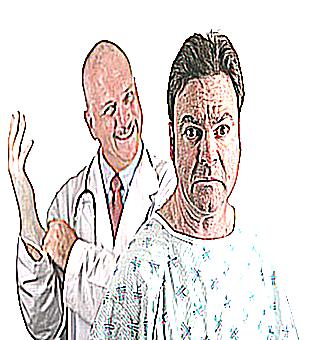Home >
Erectile Dysfunction >
Urological massage
Urological massage

Urological massage in very many cases is an excellent alternative to drug treatment, and sometimes to surgical intervention in the fight against diseases of the genitourinary system of men. In addition, it is an effective diagnostic method that allows you to prevent the development of a particular disease in time. But what is urological massage? To understand, you need to know well the structure of the male reproductive system.
Types of urological massage and indications for its use
There are many pathological disorders in which urologists consider urological massage as the first necessary measure. All these diseases are associated, in most cases, with urination disorders or functional disorders of the internal glands. In total, there are five types of this urological procedure: prostate massage, seminal vesicle massage, Cooper's gland massage, testicle massage and urethra massage. Diseases for which this treatment method will be most beneficial are as follows:
- urinary disorders and chronic urethritis
- cancers of the male reproductive system
- chronic inflammatory or infectious diseases
- external trauma
- paraproctitis
- pararectal fistulas
- stones and cysts in the ducts
- vesiculitis
- prostate atony
- spermatorrhea
- prostatitis
Features of urological massage
For more than a century of practice, urologists have developed the most effective and painless method for the patient to conduct urological massage. As you know, the most common type of this procedure is urological massage of the prostate, since most men suffer from diseases of this gland, in one form or another. It is no secret that such a massage is performed manually through the patient's rectum, because this is how the most effective access to the prostate gland (as well as to the Cooper's gland or seminal vesicles) is ensured. The procedure is as follows: half an hour before the massage, the man is given an enema to cleanse his intestines and maintain hygiene standards. Then the patient is required to lie on the couch on its side in the infant's position, pressing the knees to the chest, because this is the most convenient way for the urologist to localize the problem area. Next, the doctor, after putting on a latex glove and lubricating it with a hypoallergenic lubricant, inserts the index finger into the rectum and gently presses on the desired area to massage, having previously performed local anesthesia, of course. The massage lasts no more than a minute, once a day, and the whole course usually takes about two weeks. During urological massage, the doctor, by his actions, stimulates the production of their secretion in the glands, along with which harmful toxins and decay products will be removed from the man's body after the inflammatory process. In addition, this procedure improves blood circulation in the designated areas and normalizes their muscle tone. It should be added that if massage is carried out for diagnostic purposes, then the urologist can thus assess the state of the entire male reproductive system, as well as detect possible cysts and oncological formations in the glands.
Other types of urological massage and contraindications
The types of urological massage do not end with transrectal procedures: for example, the patient can be massaged the urethra by introducing a special probe. Thus, inflammations of this area are cured, which are frequent when faced with an infection. In turn, massage of the testicle or its epididymis helps to combat edema and internal fluid stagnation while normalizing muscle tone. As for the contraindications, they primarily relate to the massage of the prostate gland:
- acute prostatitis
- benign prostatic hyperplasia
- stones in the prostate
- proctitis
- internal vein thrombosis
- fever
- hemorrhoids
It remains to add that with the skillful conduct of urological massage by an experienced doctor, the patient does not need to worry about possible discomfort or unpleasant sensations. Moreover, the benefits of such procedures are incomparable with the efforts spent on them.



























